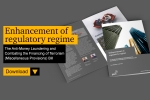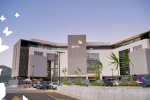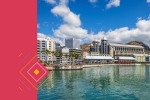The economy since independence and the vision for the future
09 Mar 2018

Mauritius is celebrating its 50 years of independence on the 12th March… 50 years of growth and prosperity for a country which was doomed for failure. Back in 1968, the country was dependent on sugar cane, which accounted for over 90% of exports.
The island followed the traditional path of economic development, from productive agriculture to manufacturing to services (our post-independence growth path is well documented). In the 1970s, the country started its first wave of industrialisation with the setting up of export processing zones (‘EPZs’), offering incentives to attract foreign investors looking to manufacture garments locally for exportation. In 50 years, the country transformed from a low income monocrop economy to a well-diversified one. The contribution of agriculture to GDP is today down to 4% while the service sector (composed heavily of hospitality, financial services and ICT) is the most important pillar of the economy, accounting for nearly 75% of GDP and 65% of the labour force. Mauritius experienced the phenomenon of premature deindustrialisation whereby its transition to a service-based economy happened much earlier in its history than other western economies.
Within a period of 10 years from independence, the service sector grew to about 50% of the country’s GDP. In general, the share of manufacturing output increased in the 1980s, with the success of EPZs and factories absorbing large quantities of unskilled labour. By the 2000s, profound structural changes already took place and the service sector became a dominant feature of the economy.
In recent years, Mauritius’ GDP growth rate has been lingering between 3% to 4%, with an unemployment rate of around 7%. The country has struggled to create jobs, with an average of around 5,000 new jobs (less than 1% of workforce) created annually over the past 10 years, despite significant growth in certain sectors of the economy.
Whilst the competitiveness of Mauritius is based on a large number of factors, the availability of lower cost and highly skilled labour plays an important role. The country’s workforce has been the cornerstone to the emergence of local industries in manufacturing, ICT and financial services. Today, the population stands at 1.2m, with a labour force of around 600,000 (including foreign workers). With a declining fertility rate from a high of 5.86 in 1968 to a current low of 1.37, the population size is expected to remain relatively static for the next 30 years, thereby resulting in an ageing population, and by 2050, over 35% of the population is expected to be over the age of 60. To add to this, youth unemployment is problematic, as around 25% of people below the age of 25 are currently unemployed.
In the past, workforce addition has typically grown at a similar rate as sector growth, as staff numbers in companies tended to mimic top line growth. However, with the transition to high value added sectors and advancement in technological innovation, workforce addition has been much lower. A lower job growth or job loss may have a severe impact on society. A breakdown in the traditional road map to prosperity could translate into further inequality and division in society.
So, where next for Mauritius?
The economic model based on labour arbitrage is likely to be seriously challenged in the future. Technological innovation in robotics and artificial intelligence (‘AI’) will cause disruption and the country’s competitiveness based on labour cost advantage will be eroded. In addition, as opposed to many developing countries with a demographic dividend, Mauritius will experience an ageing population.
Some may think that having a factory of robots replacing imported labour to produce textile products in Mauritius is inconceivable. Is an AI capable of driving cars in the Mauritius traffic with its bicycles, motorcycles or potholes far-fetched? Beware, these latest developments are actually happening right now somewhere in the world… Mauritius will not be spared! How many jobs will be lost in an era of technological unemployment? Will it impact only low skilled workers? Can technology replace highly skilled jobs?
Robots are coming and, in many cases, are already here. Sewbot technology, being developed in the US, aims to automate the entire clothing making process. The World Bank estimates that, on average, 57% of jobs in the member countries of the OECD are at risk of automation, and this is as high as 85% in developing countries. Skills that we value highly are being commoditised; jobs that couldn’t be done by a computer 10 years ago, can now be performed. Machines’ taking over is not new but machines are taking over not only manual labour, but also cognitive labour.
Robots can carry out routine support work and repetitive back office tasks, the very tasks that were originally outsourced to Mauritius within the ICT sector. As robots become more intelligent, the economies of scale that give labour a cost advantage will be eroded. In call centre operations, the use of chat bots and self-help apps may help solve customer queries with minimal human intervention. A study by Gartner predicts that 85% of customer relationship management is expected to be automated by 2020. Robotics are not only impacting on low skills jobs but, as technology streamlines routine tasks, middle skills jobs are also being affected.
Is it a doomsday scenario for Mauritius?
Although the technology is coming, it’s still years from being affordable and reliable. The economics of labour arbitrage is likely to continue to be more beneficial than heavy capital investment in the short term. Over the last 50 years, a Mckinsey Global Institute study shows that, in general, labour employment and productivity have grown in tandem. Automation makes labour more productive. A more likely evolution, given the prohibitive capital investment required, is one where robots complement manual labour as opposed to vaporising it. The use of low-cost robots (with quicker payback periods and reduced capabilities) in the local manufacturing sector, for example, would allow for cost cutting, improved efficiency but also elevate the labour role and the value they bring. The emergence of the low cost robots means that, although they may not be as good as the high cost ones, they will accelerate automation and productivity.
Within the ICT sector, whilst software automation is replacing various repetitive tasks, there will be a refocusing of people on tasks that require human skills and contribute greater value addition. Staff turnover in routine functions can be high and robots can help reduce attrition. However, collaborative robots can mix the work people do better, more efficiently and, ultimately, people are happier. New opportunities will also emerge in the field of data science, artificial intelligence and big data analytics, as well as in the technology enabled services space such as Fintech.
With its strong financial services and ICT sectors, Mauritius is well placed to take advantage of such trends. As the country’s financial services sector evolves from a treaty-based model into a substance-based framework, there will be scope for new activities as government introduces new regulations such as sandbox licences in order to facilitate the testing of new products and solutions in a controlled environment.
And then, there is Africa.
With its strategic location, Mauritius is ideally placed to capture Asia-Africa trade flows as a regional trade, logistics and financial services hub. Many economies have benefited from having a financial centre nearby; for example, Mauritius can be to Africa, what Hong Kong was to China, or Singapore to South East Asia. Asian institutions, such as the Bank of China, have set up in Mauritius with the intention to use Mauritius as a platform for their operations in Africa. With 80% of adults in Africa being unbanked, and an emerging middle class, the opportunities are immense. On average, 100 global business companies are being set up each month in the Mauritius and 60% of those are for Africa related businesses. There is a real appetite for Africa and Mauritius is playing an important role in attracting investments into the region.
The blue economy
Often forgotten, Mauritius has also a total maritime zone of 2.3 million square kilometres (1,000 times bigger than its land mass). The UN estimates that the global blue economy is USD3-5 trillion and breakthroughs in marine science are leading to new opportunities in aquaculture, pharmaceauticals, etc. The potential of the ocean economy is huge and can significantly change the country’s future.
Robots replacing jobs en masse in the medium term is unrealistic, but the effects will be felt. Mauritius lacks behind on labour productivity, and automation is inevitable if the country wants to remain globally competitive. Mauritius still has the luxury that labour remains cheaper than automation and, as the gap between skills and technology shrinks, the country must act now in order to be resilient.
The success of the island has been due to its people, and the future depends on its people, their ability to adapt to change and reinvent themselves. The country must also embrace technological innovation across all sectors, especially as a services hub (logistics, financial services, education, healthcare, etc) to respond to the needs of the region and Africa. This is where the future lies…
.jpg)
Anthony Leung Shing
Tax Leader
Contact us














